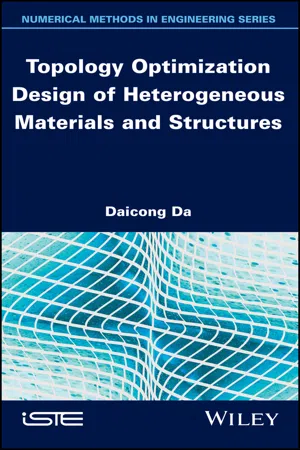1
Size Effect Analysis in Topology Optimization for Periodic Structures Using the Classical Homogenization
In topology optimization of material modeling, the homogenization method is often adopted to link the microscopic and macroscopic scales. However, scale separation is often assumed in classical homogenization theory. This assumption states that the characteristic lengths of the microstructural details are much smaller than the dimensions of the structure, or that the characteristic wavelength of the applied load is much larger than that of the local fluctuation of mechanical fields (Geers et al. 2010). In additive manufacturing of architecture materials such as lattice structures, the manufacturing process may induce limitations on the size of local details, which can lead to a violation of scale separation when the characteristic size of the periodic unit cells within the lattice are not much smaller than that of the structure. In such a case, classical homogenization methods may lead to inaccurate description of the effective behavior as non-local effects, or strain-gradient effects, may occur within the structure. On the other hand, using a fully detailed description of the lattice structure in an optimization framework could be computationally expensive.
In this chapter, we first develop a multiscale topology optimization procedure for periodic structures based on classical homogenization theory in the context of non-separated scales. The dimensions of the unit cell are not negligible with respect to the whole structure, which range from large to small compared to those of the structure to highlight the size effect. More specifically, a relocalization scheme is proposed based on the homogenization method to link the two scale fields, allowing the topology optimization problem to be solved on a coarse mesh. A corresponding reference solution is obtained by fully meshing the heterogeneities in the whole structure.
The classical homogenization technique is reviewed in section 1.1, where details of the numerical computation of effective material properties as well as the relocalization scheme are also provided. The presented topology optimization model and procedure are given in section 1.2. Numerical experiments are conducted in section 1.3 to fully investigate the size effect of the periodic unit cells. Finally, section 1.4 draws the conclusion.
1.1. The classical homogenization method
In this section, the computation of effective or homogenized material properties of heterogeneous composites in the context of linear elasticity is reviewed. The local problem at the microscopic scale with different types of boundary conditions is first introduced, followed by the numerical implementation in order to evaluate the effective elastic matrix using the classical finite element method (FEM).
1.1.1. Localization problem
A heterogeneous structure composed of two-phase composites is considered, as...
